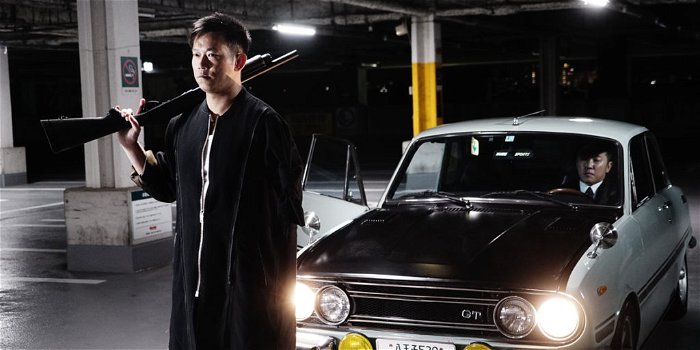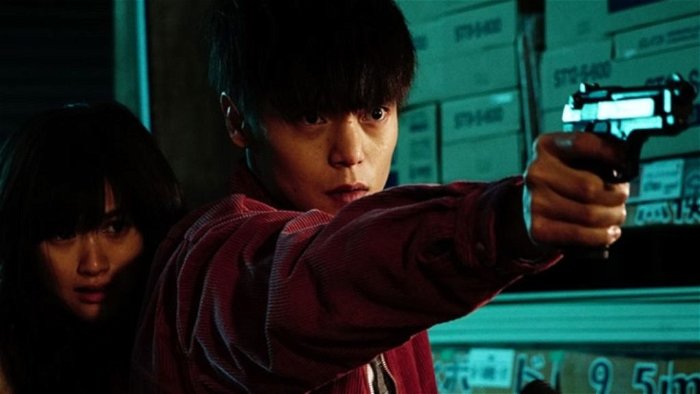Takashi Miike is a director that throughout his nearly 30-year career has made some iconic and memorable films.
From Ichi the Killer to Audition, he has built a large range of movies, all transgressive in their own ways. His talent for taking predefined genres and building new, exciting works has cemented him as a director that is always exciting, no matter the project he is connected to.
Focusing on a young boxer who has recently reached rock bottom that meets a young drug addict woman, and through a series of misadventures finds themselves embroiled in a fight for survival, First Love— Premiering at TIFF (The Toronto International Film Festival)—is his latest entry into the Yakuza genre that takes viewers to exciting, if not bombastic places. It is a film that subverts expectations while still building on preconceived ideas.
Taking time away from his busy TIFF schedule, Takashi Miike took the time to talk to CGMagazine about his latest film. In a candid interview—through the use of a translator—he discussed the process of casting and how he builds films for the audience, not the critics.
CGMagazine: First off, I want to dive into how the concept of First Love came to be and what made you want to be part of making this film?
Takashi Miike: Well, this film was actually born out of a project to kind of step a little out of the box of your commercial Japanese film. And when I say step out of the box, I mean we wanted to make a film that while using some Japanese film stars, would be closer to a genre film. The basic concept for the movie early on was the premise that no matter how bad a situation you find yourself in, you are going to meet people, and you still can have these beautiful experiences.
As a result, in the case of this film, there was a love that was actually born from this terrible situation, making that a sort of saving grace for the whole night. That’s one of the main things that we wanted to have in this film. The concept that no matter how terrible the situation is, there’s still a silver lining, and there is still going to be a saving grace, and you can even find love as a result of it.

CGMagazine: On that note, I really did want to touch on the two main characters of the film, the boxer and the woman, and how their chance meeting kind of leads them down this chaotic night. How did you find them and bring them to these challenging roles?
Takashi Miike: So the story starts by focusing on this boxer and this girl who is kind of a drug addict, with them acting as the protagonists. And as such, they were, of course, meant to be the centre of the film, and that was always our intent from the beginning. But our intent was also to paint them as these underdog protagonists. They were not extremely protagonist-esque characters. This boxer was abused and he’s had a really rough life, and he has recently been told that he’s about to die. Then you have this drug addict girl with her own issues. Through the course of this evening, they interact with all these other terrible people around them who are after many things such as money and honour, and whatever. They have these selfish things they’re going for that leads to fighting and all of this craziness.
But out of all of that chaos is born this encounter between these two people. And then from that, you have this pure relationship between these two people that turns into a love relationship. And so, absolutely that is meant to contrast everything else that’s going on the rest of the chaos of the film, with just a little bit of hope. So we infuse the film with this little bit of hope. And so we thought, “Well, we do want to give this a name that lets us communicate that?” So we decided to call the movie First Love.
CGMagazine: First Love has a lot of very strong and powerful female characters—far more than is common in the gangster genre. Was that always the case, to have a large female presence that showed a powerful force over the proceedings, or did that kind of evolve with the filmmaking process?
Takashi Miike: Traditionally, within the Yakuza genre, there are a series of tropes that are used throughout—really strong male characters with the women more often depicted as trophies to be won. This is the traditional way Yakuza films are portrayed. But we wanted to take a little bit of a different angle. Instead of doing the conventional way with very strong male types who are buff Yakuza guys with sidelined women who are shown to be just a pretty girl next to him, we wanted to change the angle and really give as much attention and as much screen real estate to the women in the film as the men. We wanted to let them develop their individuality within the film, which is important to me.

Within First Love we wanted to let them do what makes sense for their characters and ensure they are well suited to the Japanese film screen. So in the case of Becky, for example, she really liked the guy that was killed, and actually thought that he was a very important person to her. They have a close relationship. I didn’t think she would get that crazy and that violent, but she did a really great job. She put herself in that position with the concept of, “Okay, if I was stripped of this person who was so important to me how would I act,” and she really got into character.
Then you have the Chinese mafia hitwoman, who is basically just looking for a good man. So we infused her character with a little bit more of this fantasy element. What’s interesting in all of this that I have to mention, is the scriptwriter, Mr. Nakamura, because he is not your stereotypical Yakuza film scriptwriter. He actually writes scripts that have the female character stand out, that’s kind of his style. So in doing that, and putting his special sauce into the film, I felt like that led to a really good balance, where the female characters did become a powerful part of the film, and I think it ended up becoming a very positive thing for the movie. But in any case, it was all very fun to make and very fun to film. I’m glad to have been able to do it.
CGMagazine: One last thing I wanted to touch on was the way the film progresses and the action and editing ramp up with the craziness you have on screen. How did the process of editing go, and how did you end up with the kinetic energy that is seen in First Love?

Takashi Miike: You have a lot of different types of viewers. You have viewers that really like slow-paced films, and you have your viewers that enjoy a more fast-paced film. And then sometimes the viewers who like fast-paced films occasionally will like to enjoy a slower-paced film or vice versa. But instead of focusing on the greatest common denominator and how you can pack as much stuff in there that everyone is going to like, just to make this universal film that everyone’s going to love, that’s, that’s not my focus. My focus is on how to enjoy the film, and how to make the kind of film that we have fun making, and just focus on that. Now the tempo of film, and the different transitions, and the story arc—that’s all part the film package—those things are important, but for me, it was more important to look at what’s enjoyable, what’s interesting, how are we going to have all of the actors have a good time and really get into it.
To read the full, unedited interview with Takashi Miike, pick up issue #38 of CGMagazine




